
The Serene Beauty of Lake Champlain
Discover the tranquil beauty and rich history of Lake Champlain in Vermont, a perfect getaway for outdoor adventures, historical exploration, and serene relaxation.
Lake Champlain, nestled between the Green Mountains of Vermont and the Adirondack Mountains of New York, is a destination brimming with natural splendor and historical significance. Stretching over 120 miles, this freshwater lake offers an array of activities for outdoor enthusiasts and history buffs alike. From kayaking and fishing to exploring charming lakeside towns, Lake Champlain presents a perfect blend of adventure and relaxation. Visitors can immerse themselves in the lake's rich history by visiting the many museums and historical sites scattered along its shores. The Lake Champlain Maritime Museum showcases the region's maritime heritage, while the Shelburne Museum offers a diverse collection of art and Americana. For those interested in military history, Fort Ticonderoga, located at the southern end of the lake, provides a glimpse into the pivotal battles of the Revolutionary War. Nature lovers will find no shortage of trails and parks to explore. The Island Line Rail Trail offers stunning views of the lake and mountains, perfect for biking or a leisurely stroll. Wildlife enthusiasts can witness a variety of bird species and other wildlife in their natural habitats at the Missisquoi National Wildlife Refuge. Whether you're seeking a peaceful retreat or an active adventure, Lake Champlain is a destination that promises memorable experiences for all who visit.
Local tips in Lake Champlain
- The best time to visit is between late spring and early fall when the weather is perfect for outdoor activities.
- Consider renting a bike to explore the Island Line Rail Trail for breathtaking views of the lake.
- Don't miss a visit to the Lake Champlain Maritime Museum to learn about the region's maritime history.
- Pack binoculars for birdwatching at the Missisquoi National Wildlife Refuge.
- Try local cuisine at the lakeside towns' eateries, especially the fresh seafood.
The Serene Beauty of Lake Champlain
Lake Champlain, nestled between the Green Mountains of Vermont and the Adirondack Mountains of New York, is a destination brimming with natural splendor and historical significance. Stretching over 120 miles, this freshwater lake offers an array of activities for outdoor enthusiasts and history buffs alike. From kayaking and fishing to exploring charming lakeside towns, Lake Champlain presents a perfect blend of adventure and relaxation. Visitors can immerse themselves in the lake's rich history by visiting the many museums and historical sites scattered along its shores. The Lake Champlain Maritime Museum showcases the region's maritime heritage, while the Shelburne Museum offers a diverse collection of art and Americana. For those interested in military history, Fort Ticonderoga, located at the southern end of the lake, provides a glimpse into the pivotal battles of the Revolutionary War. Nature lovers will find no shortage of trails and parks to explore. The Island Line Rail Trail offers stunning views of the lake and mountains, perfect for biking or a leisurely stroll. Wildlife enthusiasts can witness a variety of bird species and other wildlife in their natural habitats at the Missisquoi National Wildlife Refuge. Whether you're seeking a peaceful retreat or an active adventure, Lake Champlain is a destination that promises memorable experiences for all who visit.
When is the best time to go to Lake Champlain?
Unmissable attractions to see
Shelburne Farms
Experience the beauty of Vermont at Shelburne Farms, where sustainable agriculture meets breathtaking landscapes and local artisanal delights.
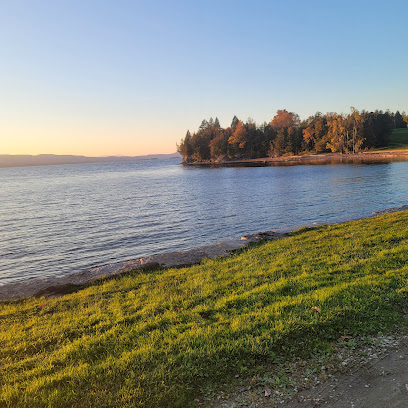
Lake Champlain Chocolates Flagship Store
Explore the sweet paradise of Lake Champlain Chocolates Flagship Store, where artisanal chocolates, ice cream, and coffee create a delightful experience in Burlington, Vermont.

North Beach Park
Experience the tranquil beauty of North Beach Park in Burlington, Vermont – a perfect getaway for relaxation, activities, and stunning lake views.

Oakledge Park
Explore Oakledge Park in Burlington, Vermont - a scenic retreat with recreational activities, stunning lake views, and beautiful landscapes.

Point Au Roche State Park
Explore the stunning landscapes and outdoor activities at Point Au Roche State Park in Plattsburgh, New York, a perfect destination for all nature lovers.

Spirit of Ethan Allen
Experience the allure of Lake Champlain with a scenic cruise aboard the Spirit of Ethan Allen, where beautiful sights and delightful dining await.

Red Rocks Park
Discover the serene beauty of Red Rocks Park in South Burlington, Vermont, a natural paradise with stunning views and diverse outdoor activities.

Dakin Farm
Experience the flavors of Vermont at Dakin Farm, a gourmet grocery store and gift basket destination in Ferrisburgh, offering local delicacies and unique gifts.

World's Tallest Filing Cabinet
Explore the whimsical World’s Tallest Filing Cabinet in Burlington, Vermont, a quirky roadside attraction that showcases the city's creative spirit.

Burlington Farmers Market
Experience the vibrant Burlington Farmers Market, where local flavors, fresh produce, and community spirit come together in a lively Vermont setting.

Leddy Park
Discover serenity at Leddy Park, Burlington's gem on Lake Champlain, offering a perfect blend of nature, recreation, and relaxation.
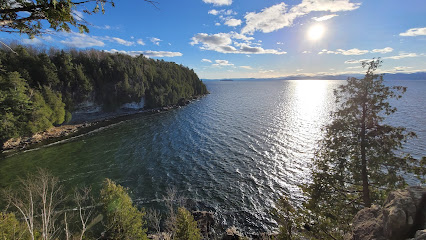
His Majesty's Fort at Crown Point
Discover the rich historical tapestry of His Majesty's Fort at Crown Point, a captivating tourist attraction and museum set against the scenic backdrop of Lake Champlain.

Nectar's
Experience the vibrant atmosphere of Nectar's, Burlington's premier live music bar, serving delicious wings and burgers in a lively setting.

Ethan Allen Park
Discover the natural beauty of Ethan Allen Park in Burlington, Vermont, an ideal destination for hiking, picnicking, and enjoying stunning scenic views.

Causeway Park
Discover the serene beauty of Causeway Park in Colchester, Vermont—a scenic haven for nature lovers and outdoor enthusiasts.

Essential places to dine
Olive Garden Italian Restaurant
Savor authentic Italian cuisine at Olive Garden in South Burlington - where every meal feels like a celebration with family.

American Flatbread Burlington Hearth
Discover artisanal pizzas and craft brews at American Flatbread Burlington Hearth - a culinary gem in the heart of Vermont.
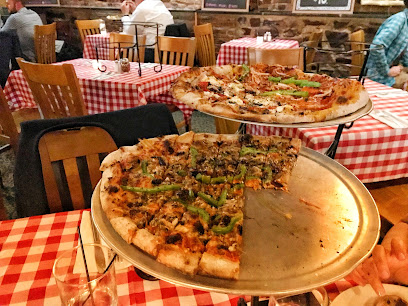
Chick-fil-A
Experience the taste of tradition at Chick-fil-A Plattsburgh – where deliciousness meets family-friendly dining.

Shanty On The Shore
Experience fresh seafood delights at Shanty On The Shore in Burlington - where lake views meet culinary excellence.
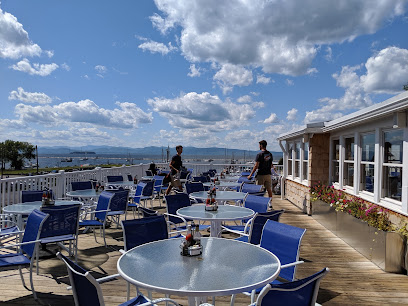
Perkins Restaurant & Bakery
Enjoy hearty American cuisine at Perkins Restaurant & Bakery in Plattsburgh – perfect for families seeking comfort food delights.

Hen of the Wood - Burlington
Experience exquisite American cuisine at Hen of the Wood in Burlington, where local ingredients meet fine dining excellence.

99 Restaurants
Experience delicious American cuisine at 99 Restaurants in Williston, Vermont - where New England hospitality meets great food.
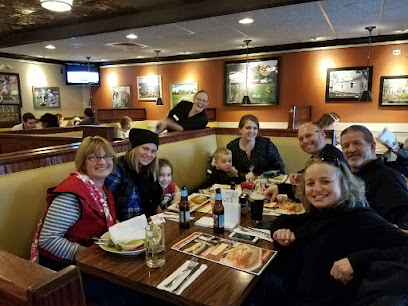
Michael's on the Hill
Discover exquisite modern European cuisine at Michael's on the Hill in Waterbury Center, Vermont - where culinary artistry meets breathtaking views.

Great Northern Kitchen at Zero Gravity
Discover the vibrant culinary scene at Great Northern Kitchen in Burlington, where local flavors meet innovative cuisine in a welcoming atmosphere.

Chipotle Mexican Grill
Experience the vibrant taste of Mexico at Chipotle Mexican Grill in South Burlington - fresh ingredients, customizable meals, and fast service await!

Subway
Experience the freshness of custom sandwiches at Subway in Burlington – perfect for quick meals while exploring Vermont's charming city.

Markets, malls and hidden boutiques
Church Street Marketplace
Experience the lively Church Street Marketplace in Burlington, Vermont, where shopping, dining, and entertainment come together in a vibrant pedestrian-friendly setting.

ECHO, Leahy Center for Lake Champlain
Explore ECHO, Leahy Center for Lake Champlain: A vibrant science museum with interactive exhibits, stunning lake views, and educational fun for all ages.

Lake Champlain Chocolates Flagship Store
Experience the sweet side of Burlington at Lake Champlain Chocolates Flagship Store, where exquisite chocolates and delightful treats await every visitor.

Hero's Welcome
Explore the charm of Hero's Welcome in North Hero, Vermont - a gift shop, bakery, and outdoor adventure hub all in one!

Vermont Gift Barn
Explore a treasure trove of local arts, unique gifts, and handcrafted treasures at Vermont Gift Barn in South Burlington.

Phoenix Books Burlington
Explore the enchanting world of Phoenix Books Burlington, your one-stop destination for books, gifts, and local treasures in the heart of Vermont.

Lake Champlain Chocolates
Discover the art of chocolate making at Lake Champlain Chocolates, where every treat is a celebration of flavor and craftsmanship.

Keeler's Bay Variety Store Inc & State Liquor Store
Explore Keeler's Bay Variety Store Inc & State Liquor Store, your one-stop shop for local groceries, unique finds, and Vermont wines in South Hero.

The Crystal Cottage of Vermont
Explore a treasure trove of unique gifts, crystals, and handcrafted jewelry at The Crystal Cottage of Vermont in Burlington's charming South End.

Common Deer
Explore Common Deer in Burlington, VT: A Unique Gift Shop Showcasing Local Artistry and Special Souvenirs.
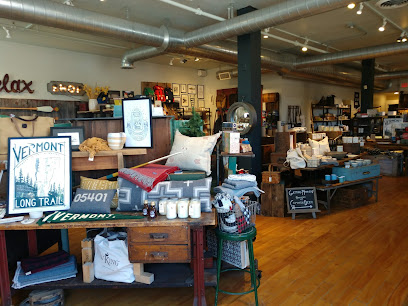
Golden Hour Gift Co (formerly Birdfolk Collective)
Explore the charm of Winooski at Golden Hour Gift Co, where unique handcrafted treasures and local artistry await every visitor.

Home & Garden Vermont
Explore Home & Garden Vermont for unique gifts, local crafts, and vibrant floral arrangements in the heart of Burlington.

The Green Frog
Explore The Green Frog in South Hero, Vermont, a unique gift shop showcasing local artistry and handcrafted treasures for every occasion.
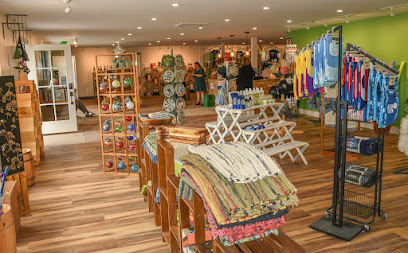
Tradewinds Imports
Explore Tradewinds Imports in Burlington, Vermont, for unique gifts and handcrafted jewelry that celebrate local artistry and culture.

Earthbound Trading Co.
Explore a treasure trove of unique gifts, fashion, and home goods at Earthbound Trading Co. in Burlington, Vermont, where every item tells a story.

Essential bars & hidden hideouts
Farmhouse Tap & Grill (Vermont)
Experience the flavors of Vermont at Farmhouse Tap & Grill, where local ingredients meet craft brews in a vibrant atmosphere.

Waterworks Food + Drink
Discover Waterworks Food + Drink, where exquisite American cuisine meets stunning views of Winooski Falls for an unforgettable dining experience.

The Vermont Pub & Brewery
Explore the heart of Burlington at The Vermont Pub & Brewery, where craft beer meets delectable cuisine in a warm and inviting atmosphere.

The Archives
Experience the vibrant nightlife of Burlington at The Archives, where cocktails meet classic video gaming in a lively atmosphere.

Mule Bar
Experience the best of Vermont's culinary scene at Mule Bar, a lively gastropub in Winooski, offering delicious food and a vibrant bar atmosphere.

McKee's Pub & Grill
Experience the vibrant atmosphere and delicious flavors at McKee's Pub & Grill, a top spot for food and fun in Winooski, Vermont.

Red Square
Discover Burlington's nightlife at Red Square, a lively bar and nightclub offering drinks, music, and a vibrant atmosphere for all.

Shore Acres Inn & Restaurant
Discover the perfect blend of relaxation and fine dining at Shore Acres Inn & Restaurant, a lakeside retreat in beautiful North Hero, Vermont.

The Old Post
Experience delicious grill cuisine, lively karaoke, and local music at The Old Post in South Burlington, Vermont - a must-visit for all travelers.

Juniper Bar and Restaurant
Discover the flavors of Vermont at Juniper Bar and Restaurant, where local ingredients meet innovative American cuisine in a vibrant setting.

JP's Pub
Dive into the vibrant nightlife at JP's Pub in Burlington, VT, where karaoke and camaraderie create unforgettable memories.

Lincolns
Experience Burlington's nightlife at Lincolns, a beloved bar known for its friendly atmosphere and delicious drinks in the heart of Vermont.

Drink
Discover the vibrant atmosphere and unique cocktails at Drink, Burlington's favorite bar and lounge, perfect for unwinding after a day of exploration.

The Whiskey Room
Experience the finest whiskeys and craft cocktails at The Whiskey Room, Burlington's vibrant cocktail bar known for its exceptional service and inviting atmosphere.
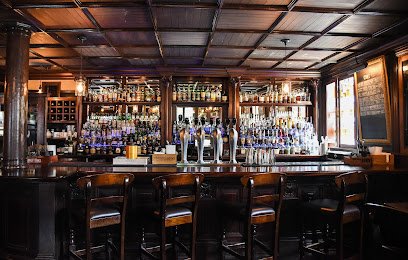
Three Needs
Experience the best of Burlington's nightlife at Three Needs, where local brews and good times come together in a cozy atmosphere.

Local Phrases about Lake Champlain
-
- HelloHowdy
[haʊdi] - GoodbyeSee ya
[siː jə] - YesYup
[jʌp] - NoNah
[nɑː] - Please/You're welcomePlease/You're welcome
[pliːz/jʊər ˈwɛlkəm] - Thank youThanks
[θæŋks] - Excuse me/SorryPardon me/Sorry
[ˈpɑrdən mi/sɔri] - How are you?How you doin'?
[haʊ jʊ ˈduɪn] - Fine. And you?Fit as a fiddle. You?
[fɪt əz ə ˈfɪdəl juː] - Do you speak English?Do ya speak English?
[duː jə spiːk ˈɪŋɡlɪʃ] - I don't understandI ain't gettin' ya
[aɪ eɪnt ˈɡɛtɪn jə]
- HelloHowdy
-
- I'd like to see the menu, pleaseI'd like to see the menu, please
[aɪd laɪk tʊ siː ðə ˈmɛnjuː pliːz] - I don't eat meatI don't eat meat
[aɪ doʊnt iːt mit] - Cheers!Cheers!
[ʧɪrz] - I would like to pay, pleaseI would like to pay, please
[aɪ wʊd laɪk tʊ peɪ pliːz]
- I'd like to see the menu, pleaseI'd like to see the menu, please
-
- Help!Help!
[hɛlp] - Go away!Git!
[ɡɪt] - Call the Police!Call the Police!
[kɔl ðə pəˈlis] - Call a doctor!Call a doc!
[kɔl ə ˈdɑk] - I'm lostI'm lost
[aɪm lɔst] - I'm illI'm sick
[aɪm sɪk]
- Help!Help!
-
- I'd like to buy...I'd like to buy...
[aɪd laɪk tʊ baɪ] - I'm just lookingI'm just lookin'
[aɪm dʒʌst ˈlʊkɪn] - How much is it?How much is it?
[haʊ mʌʧ ɪz ɪt] - That's too expensiveThat's too pricey
[ðæts tuː ˈpraɪsi] - Can you lower the price?Can ya lower the price?
[kæn jə ˈloʊər ðə praɪs]
- I'd like to buy...I'd like to buy...
-
- What time is it?What time is it?
[wʌt taɪm ɪz ɪt] - It's one o'clockIt's one o'clock
[ɪts wʌn əˈklɑk] - Half past (10)Half past (10)
[hæf pæst (10)] - MorningMorning
[ˈmɔrnɪŋ] - AfternoonAfternoon
[ˌæftərˈnun] - EveningEvening
[ˈivnɪŋ] - YesterdayYesterday
[ˈjɛstərdeɪ] - TodayToday
[təˈdeɪ] - TomorrowTomorrow
[təˈmɑroʊ] - 11
[wʌn] - 22
[tuː] - 33
[θriː] - 44
[fɔr] - 55
[faɪv] - 66
[sɪks] - 77
[sɛvən] - 88
[eɪt] - 99
[naɪn] - 1010
[tɛn]
- What time is it?What time is it?
-
- Where's a/the...?Where's a/the...?
[wɛrz ə/ðə] - What's the address?What's the address?
[wɑts ðə əˈdrɛs] - Can you show me (on the map)?Can you show me (on the map)?
[kæn jə ʃoʊ miː (ɒn ðə mæp)] - When's the next (bus)?When's the next (bus)?
[wɛnz ðə nɛkst (bʌs)] - A ticket (to ....)A ticket (to ....)
[ə ˈtɪkɪt (tu ....)]
- Where's a/the...?Where's a/the...?
History of Lake Champlain
-
Long before European settlers arrived, the area around Lake Champlain was inhabited by Indigenous peoples, including the Abenaki and Mohican tribes. These communities utilized the lake for fishing, transportation, and trade. The lake was known as 'Bitawbagok,' meaning 'the waters between,' and it played a crucial role in their daily lives and spiritual practices.
-
In 1609, the French explorer Samuel de Champlain became the first European to document his journey on the lake that now bears his name. Champlain's expedition marked the beginning of European interest in the region. His encounters with the local Iroquois tribes were both cooperative and confrontational, setting the stage for future colonial interactions.
-
During the mid-18th century, Lake Champlain became a strategic frontier in the French and Indian War. Both French and British forces built forts along its shores, including Fort Carillon (later Fort Ticonderoga) and Fort Saint-Frédéric. These fortifications played a significant role in the battles that determined control over North America.
-
Lake Champlain was a crucial waterway during the American Revolutionary War. The lake served as a natural barrier and a transportation route for both the British and the American forces. In 1776, the Battle of Valcour Island took place on the lake, where Benedict Arnold's fleet delayed the British advance, providing the American forces valuable time to prepare for subsequent engagements.
-
Lake Champlain again found itself as a theater of war during the War of 1812. The Battle of Plattsburgh in 1814 was a decisive American victory that thwarted a British invasion from Canada. The naval engagement on the lake and the concurrent land battle forced the British to retreat, cementing American control over the region.
-
The 19th century saw the rise of the steamboat era on Lake Champlain. Steamboats like the SS Phoenix and the SS Ticonderoga revolutionized travel and commerce in the region, connecting communities along the lake and facilitating the transport of goods. This period marked significant economic growth and increased accessibility to the scenic beauty of the lake.
-
Lake Champlain's rich history and natural beauty have made it a popular tourist destination. Sites like the Lake Champlain Maritime Museum preserve and interpret the region's maritime heritage. The lake's shores are dotted with historic towns, each with their own unique stories and cultural landmarks, making it a vibrant part of Vermont's cultural tapestry.
-
Beyond its historical importance, Lake Champlain is also known for its ecological significance. The lake supports a diverse range of wildlife, including fish species like lake trout and Atlantic salmon. Conservation efforts are ongoing to protect its natural habitats and to address environmental challenges such as pollution and invasive species.
Lake Champlain Essentials
-
Lake Champlain is accessible by various means of transportation. The nearest major airport is Burlington International Airport (BTV) in Vermont, approximately 10 miles from the lake. From the airport, you can rent a car, take a taxi, or use ride-sharing services to reach your destination. Additionally, Amtrak offers train services to stations in nearby cities such as Essex Junction, VT. For those driving, Interstate 89 and U.S. Route 2 provide direct routes to the lake.
-
Once at Lake Champlain, you have several transportation options. Renting a car is highly recommended for flexibility, especially if you plan to explore the surrounding areas. Bicycles are also a popular choice, with many rental options available and numerous cycling paths around the lake. Public buses operate in the Burlington area, and local ferries offer scenic crossings between Vermont and New York.
-
The official currency is the United States Dollar (USD). Credit cards are widely accepted in hotels, restaurants, and shops around Lake Champlain. ATMs are readily available in larger towns such as Burlington and Plattsburgh. It is advisable to carry some cash for smaller establishments, especially in more rural areas.
-
Lake Champlain is generally a safe destination for tourists. However, it is wise to take standard precautions. Avoid isolated areas at night and always be aware of your surroundings. Burlington and Plattsburgh are safe cities, but as in any urban area, petty crimes like pickpocketing can occur. It’s best to keep your belongings secure and avoid displaying valuables openly.
-
In case of emergency, dial 911 for immediate assistance. There are medical facilities in Burlington, including the University of Vermont Medical Center, which offers comprehensive medical services. Pharmacies are available in most towns around the lake. It is recommended to have travel insurance that covers medical emergencies.
-
Fashion: Do wear comfortable, weather-appropriate clothing. Layers are useful as temperatures can vary. Don't wear overly revealing clothing in public areas. Religion: Do respect local religious customs if visiting places of worship. Public Transport: Do be respectful and offer seats to elderly passengers. Don't eat or drink on public buses. Greetings: Do greet people with a friendly 'Hello' or 'Hi.' A handshake is common in more formal settings. Eating & Drinking: Do try local specialties such as Vermont cheddar cheese and maple syrup. Don't forget to tip your waiter, typically 15-20% of the bill.
-
To experience Lake Champlain like a local, spend time at the Burlington Farmers Market where you can buy fresh produce and local crafts. Engage with locals who are often friendly and willing to share insights about the area. Don't miss visiting the Shelburne Museum, which offers a deep dive into the region’s history. For a unique experience, take a sunset cruise on the lake for breathtaking views.
Nearby Cities to Lake Champlain
-
Things To Do in Stowe
-
Things To Do in Lake Placid
-
Things To Do in Middlebury
-
Things To Do in Montpelier
-
Things To Do in Montreal
-
Things To Do in Killington
-
Things To Do in Rutland
-
Things To Do in Woodstock
-
Things To Do in Hanover
-
Things To Do in Saratoga Springs
-
Things To Do in Bennington
-
Things To Do in Laconia
-
Things To Do in Keene
-
Things To Do in Brattleboro
-
Things To Do in Ottawa













